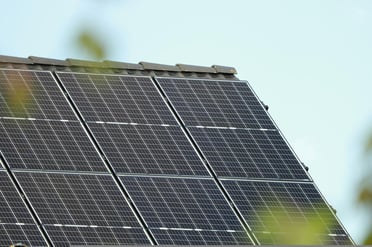As the year draws to a close, it is a good moment to reflect on the breadth of solar projects delivered by Spirit Energy over the last twelve months. From large scale commercial rooftops to highly engineered residential systems, this year captures the full range of what modern solar looks like in practice.
Do Solar Panels Work In Winter?
TLDR:
Solar panels work throughout winter in the UK. Output is lower because sunlight levels drop, but panels continue generating on cloudy, rainy and cold days. Cold weather actually often improves efficiency. Hail damage is rare because panels undergo strict impact testing.
The Leading Solar Installer in Reading
If you are searching for a solar installer in Reading or across Berkshire, you want an installer that understands the technology, the regulations, and the real return on investment for your home. You also want an installer with a track record. Spirit Energy has installed thousands of solar panels across Reading, Wokingham, Earley, Caversham, Tilehurst, and wider Berkshire. Our installations range from small domestic rooftops to some of the region’s largest commercial solar projects.
How Commercial Solar Panel Installation Works: Spirit Energy’s 7-Step Process for UK Businesses
Installing commercial solar panels is one of the most effective ways for UK businesses to cut energy costs, improve sustainability performance, and secure long-term resilience. But a successful project depends on choosing the right partner, one with engineering expertise, strong safety standards, and a proven commercial track record.
Understanding Commercial Solar Paybacks in the UK
With energy markets in flux and corporate ESG reporting tightening, solar and battery systems are becoming cornerstone assets for UK businesses. In 2025, government-backed grants, capital incentives, and energy export payments are accelerating payback times and helping organisations strengthen both their sustainability and financial positions.
How to Improve EPC Rating with Solar?
Across the UK, businesses are under growing pressure to improve the energy efficiency of their buildings. Minimum Energy Efficiency Standards (MEES) currently prohibit the letting of commercial properties below an EPC rating of E, with government plans to raise the minimum to B by 2030. For property owners and facility managers, this shift is not just regulatory - it’s financial. Buildings with low EPC scores are becoming harder to lease, insure, or refinance.
From P-Type to N-Type Solar Panels, Why the Shift?
For those who have their finger on the pulse of the solar energy market, it's becoming obvious that there is an increasing shift towards the manufacture and use of n-type solar from p-type panels in both commercial and domestic settings, to the point where the former now dominate. But why has this shift come about, and more fundamentally what is the difference between the two?
High Power Solar Panels
In the space of just a few years, the average panel we install on domestic projects has shot up from around 315W to at least 375W, with more and more residential modules breaking the 400W barrier.
This is down to a few factors, such as the widespread adoption of new, more efficient technologies, bigger cells and bigger modules:
Tier 1 Solar Panels: Are They Worth It?
When researching solar PV, you may have come across the phrase ‘tier 1 solar panels’. It’s used as a selling point by some manufacturers and installers to demonstrate the reliability of their products. But is that really the case?





















